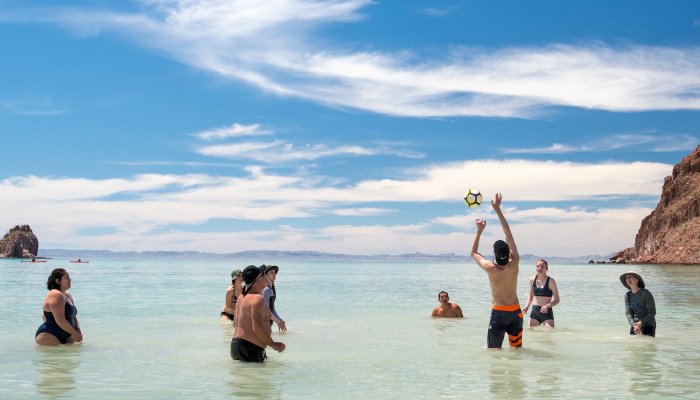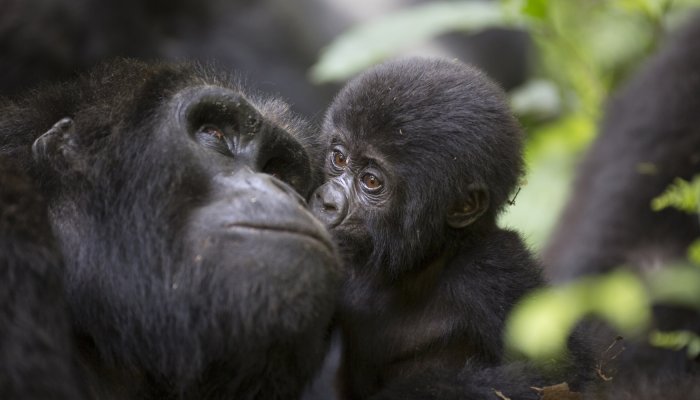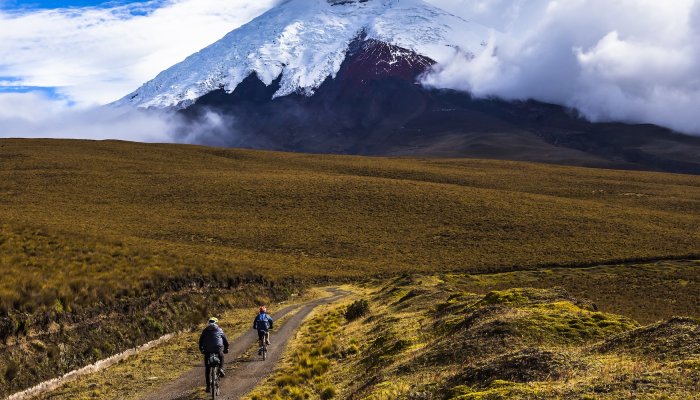Top 5 Islands to Visit in the Galapagos
Straddling the equator in the Pacific Ocean, the Galapagos is a remote archipelago of volcanic islands located about 600 miles off the coast of Ecuador. They have become renowned worldwide for their unique and diverse plant and animal species, many found nowhere else on Earth. Ongoing seismic and volcanic activity continues to shape the islands’ dramatic landscapes while the nutrient-rich surrounding waters support an abundance of marine life.
The Galapagos Islands were made famous by Charles Darwin, whose wildlife observations during his 1835 voyage on the HMS Beagle helped inspire his theory of evolution by natural selection. Giant tortoises, marine iguanas, and flightless cormorants are among the iconic species that have evolved and adapted to the islands' unique environments over millions of years. Today, the islands are protected as a national park and UNESCO World Heritage site, with strictly controlled tourism to preserve the delicate ecosystems.
An adventure here is a once-in-a-lifetime chance to witness the wonders of nature in what is a living laboratory of evolution. But deciding which islands to visit can be tricky. More than a dozen are currently accessible to visitors, although it’s almost impossible to visit all on a single trip. So to help you plan, we thought we’d highlight 5 of the top islands to visit in the Galapagos to get the most out of the time you have available.

San Cristobal Island
Formed by the fusion of three or four extinct volcanoes, San Cristobal is the fifth largest and easternmost island in the Galapagos chain. Its name pays homage to St. Christopher, the patron saint of seafarers, and it holds a special place in history as the first spot where Charles Darwin set foot in the Galapagos during his voyage in 1835.
San Cristobal is also home to the oldest permanent settlement in the islands, Puerto Baquerizo Moreno, where you’ll find one of the archipelago’s two main airports. It’s also here that you’ll find the Galapagos National Park Visitor Center, which provides an in-depth look at the archipelago's natural and human history through interpretive exhibits.
San Cristobal is a “must visit” for its diverse array of visitor sites showcasing the island's unique wildlife, landscapes, and history. At the Sea Lion Rookery, you can observe large numbers of sea lions, along with yellow warblers, frigatebirds, and Darwin's finches. Hiking up nearby Frigatebird Hill provides the opportunity to see both magnificent and great frigatebirds nesting together, while boat trips to Isla Lobos allow for up-close encounters with blue-footed boobies (plus excellent snorkeling!)
Punta Pitt at the island's far eastern tip hosts all three species of boobies - red-footed, blue-footed, and Nazca - while the sandy beach at Cerro Brujo impresses with its marine iguanas. In the highlands, El Junco Lagoon (one of the only permanent freshwater lakes in the Galapagos) attracts white-cheeked pintail ducks and San Cristobal mockingbirds.

Santa Cruz Island
Santa Cruz is the second largest island in the Galapagos archipelago and a central hub for both tourism and human settlement in the islands. Located in the heart of the Galapagos, it is home to the largest human population in the archipelago, concentrated primarily in the bustling port town of Puerto Ayora on the island's southern coast.
Santa Cruz's diverse landscapes include arid coastal zones, humid highlands, and a central agricultural zone, with rich volcanic soils that support the cultivation of coffee, bananas, and avocados. For many visitors, it serves as the gateway to Galapagos tourism, with most passing through the streets of Puerto Ayora and its bustling harbor, whether on day trips or multi-day cruises.
One of the most popular destinations on Santa Cruz is the Charles Darwin Research Station and Fausto Llerena Tortoise Center, located a short walk from Puerto Ayora. Here, you can learn about the groundbreaking scientific research and conservation efforts being undertaken to protect the islands' unique ecosystems, as well as come face-to-face with giant tortoises at all life stages.
Venturing beyond Puerto Ayora, you can hike through a partially collapsed lava tube at El Mirador, observe sharks in the mangrove-fringed waters of Black Turtle Cove, or lounge amidst sea lions on the white sands of Tortuga Bay. A journey into the misty highlands reveals Santa Cruz's remarkable ecological diversity, with opportunities to spot Darwin's finches, vermilion flycatchers, and short-eared owls. Other notable sites include the twin pit craters of Los Gemelos and the successful land iguana breeding grounds of Cerro Dragon.

Isabela Island
Isabela is a seahorse-shaped island that was originally christened Albemarle Island by Ambrose Cowley in 1684. Stretching 120 kilometers in length, it is the largest island in the archipelago and home to sheltered anchorages like Tagus Cove, which served as a haven for pirates, buccaneers, and whalers in times gone by.
In the late 19th century, an enterprising Ecuadorian named Antonio Gil colonized the southern part of Isabela, establishing the town of Puerto Villamil, named after a freedom fighter from Guayaquil. The settlers tried their hand at various industries, from lime production using coral to sulfur mining in volcanic calderas and coffee cultivation. Today, most residents make their living from fishing, farming, and the burgeoning tourism trade.
From the awe-inspiring caldera of Sierra Negra (one of the largest in the world) to the easily accessible lagoons, beaches, and trails near Puerto Villamil, Isabela Island has something to offer everyone. You can explore the island's rugged terrain on foot or horseback, marveling at the otherworldly landscapes of volcanic lava flows and fumaroles. Along Isabela’s coastline, eager snorkelers can come face-to-face with playful sea lions and graceful sea turtles.
The Villamil Lagoons provide a haven for migratory birds such as black-necked stilts and flamingos, while the Tortoise Center offers a glimpse into the conservation efforts to protect the island’s giant tortoises. Interestingly, Isabela boasts more wild tortoises than all the other islands combined, with each volcano hosting its own unique species. History buffs shouldn’t miss a visit to the Wall of Tears, a somber reminder of the island's past as a penal colony.

Floreana Island
Despite being relatively small in size, Floreana has provided a backdrop to many of the Galapagos' earliest settlement attempts. In 1793, whalers established the first rudimentary "post office" on Floreana and the island became home to the very first permanent Galapagos resident in 1807, an Irishman by the name of Patrick Watkins.
Ecuador's initial colonization endeavor in the Galapagos took place on Floreana in 1832, with the establishment of a short-lived penal colony that ultimately failed. Today, the majority of Floreana's small population subsists through farming, overcoming the challenges posed by limited fresh water and infrequent transportation to other islands.
One of Floreana’s most popular visitor sites is Cormorant Point, where you can marvel at the glittering olivine crystals that pepper the green-tinged shoreline before strolling over to Flour Beach made of finely ground white coral. The main attraction here is the brackish lagoon where elegant Galapagos flamingoes wade through the shallows, using their curved beaks to filter feed on tiny shrimp. Keen birdwatchers can also spot pintail ducks, large-billed flycatchers, and Darwin's finches, together with a variety of other shorebirds.
Post Office Bay is a site steeped in human history, with a wooden barrel placed here by whalers in 1793 to serve as a makeshift mail system. To this day, visitors sift through postcards left by previous travelers, taking any they can hand-deliver and leaving their own for future guests to find. The marine sites around Floreana are equally captivating, with Devil's Crown (a sunken volcanic crater) offering some of the best snorkeling in the Galapagos.

Baltra Island
Also known as South Seymour, Baltra is a small, flat island located near the center of the Galapagos archipelago. It was formed by the uplifting of submarine lava and is characterized by arid terrain studded with saltbush, prickly pear cactus, and fragrant Palo Santo trees. Though the island itself lacks any official visitor sites, Baltra is the main point of entry for travelers to the Galapagos, as it is home to one of the two airports that connect the archipelago to mainland Ecuador.
Prior to becoming a tourist gateway, Baltra played a significant role in World War II, when the United States established an air base there to help protect the Panama Canal. Remnants of this military history can still be seen from the air and Baltra continues to serve as an official Ecuadorian military base, housing personnel from both the Navy and Air Force.
Despite its small size, Baltra teems with birdlife, with many species of boobies and frigatebirds frequently spotted soaring overhead or roosting in the island's scrubby vegetation. Nearby islands like North Seymour, Mosquera, Daphne Major, and Daphne Minor offer additional opportunities for wildlife viewing, with several visitor sites and marine areas to explore.
Mosquera is particularly interesting and home to one of the largest sea lion populations in the area. The islet's sandy stretches also attract an array of coastal birds, along with brightly colored Sally Lightfoot crabs, which can be seen scuttling along the shore. One of Baltra’s most important conservation stories centers around its endemic land iguanas, which have come back from the brink of extinction thanks to a successful captive breeding program.




